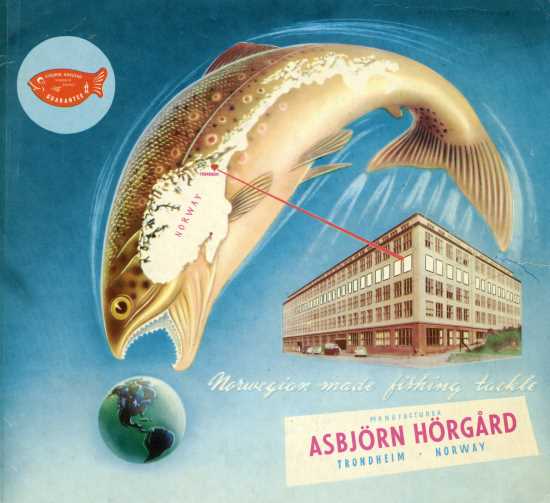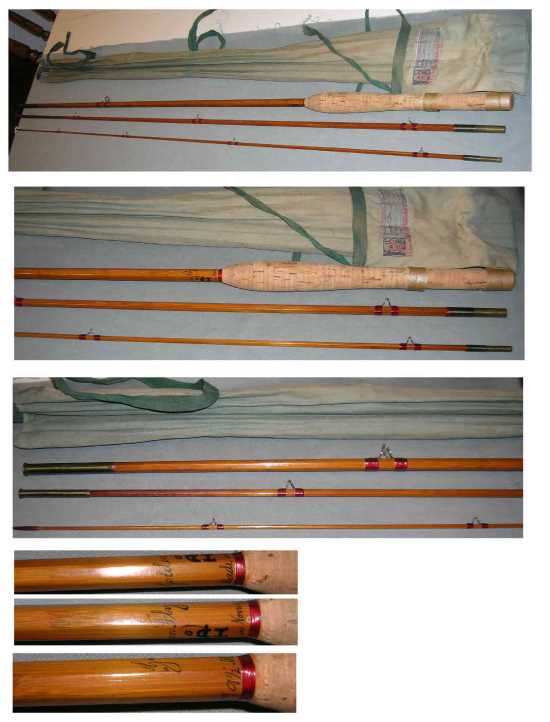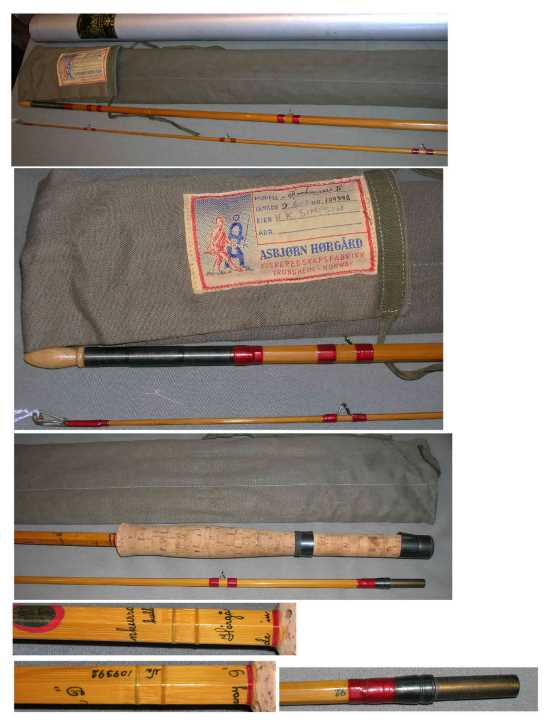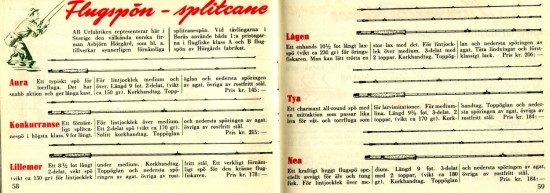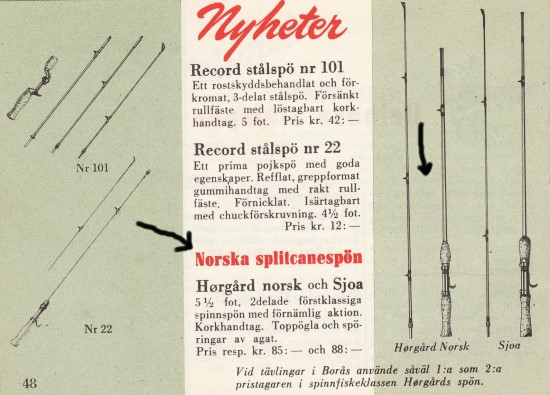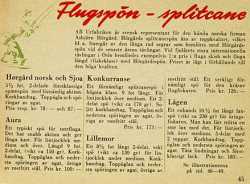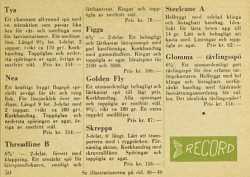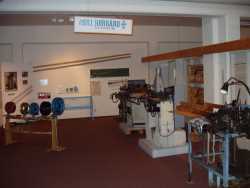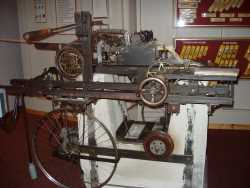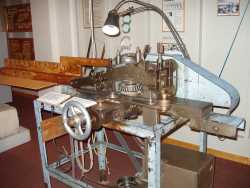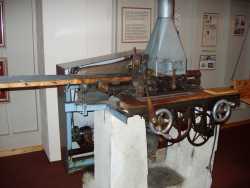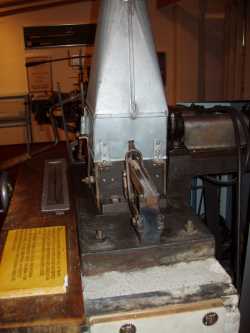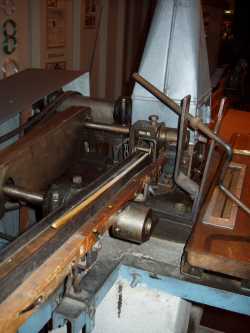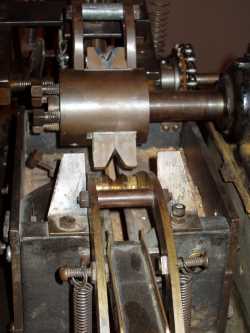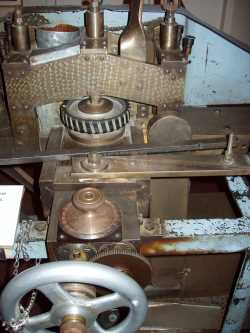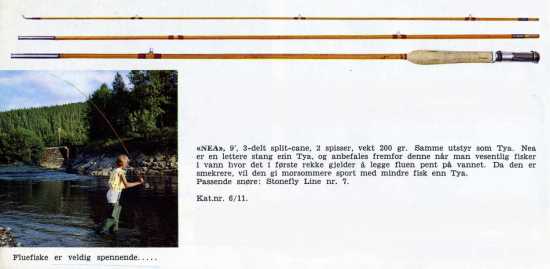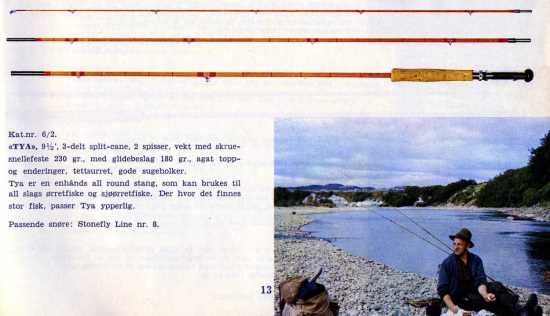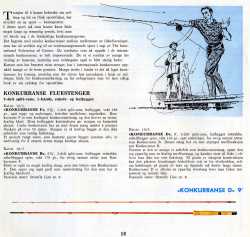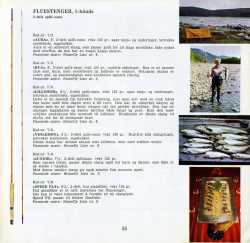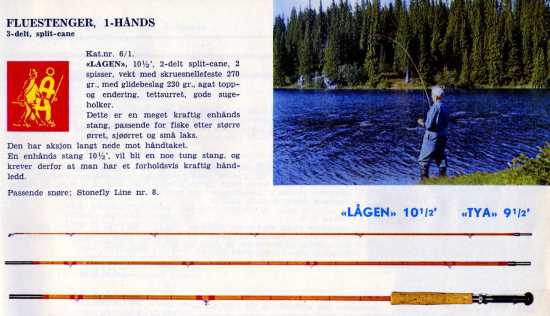Asbjörn Hörgård
/ABU Rods
Composite Hörgård image and many others below from the very interesting vintage fishing web pages of Øyvind S. Bruland
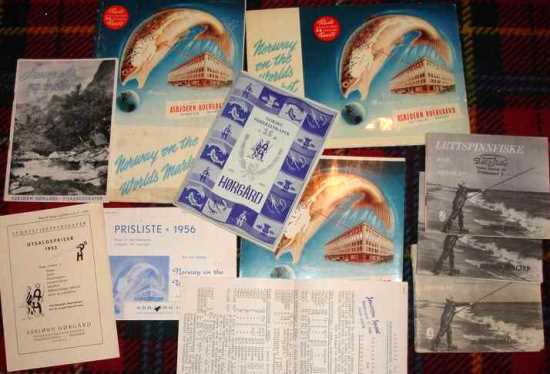
Missing from my collection was a Horgard split cane flyrod and spinning rod or baitcaster imported by ABU from Norway, until a few years ago.
Now arrived to my
collection, are two
Asbjørn
Hørgård
rods, (Konkurasse and Golden Fly) from Oyvind in Norway and Earl in
United States. Still looking for any baitcaster model viz Norsk or
Sjoa models or Spinning viz model Figga. The spinning Threadline
version has been found and is seen below.
When I realised Len Borgstroms first fly rod was a A.H.
Lillemor
(incidentally named after Asbjörns wife) , I searched to
find one and sent it his way and this is it on the carpet in his
study.
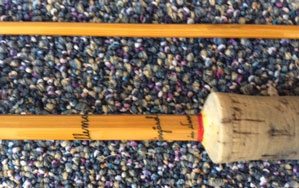
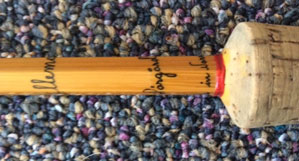
For
someone who personally, and with his family, gave so much to
the Sportfishing world, it was wonderful feeling indeed for me
to send a rod such as this back to him and bring so much joy to him,
that he now hangs it with pride in his home office. 1951 was a
special year for ABU to include these fine rods in the N&N
catalog of the era.
A.H. Threadline below (the most recently arrived addition)


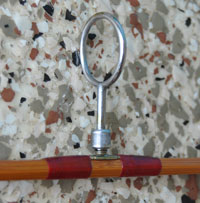
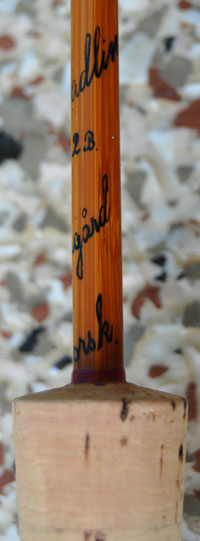
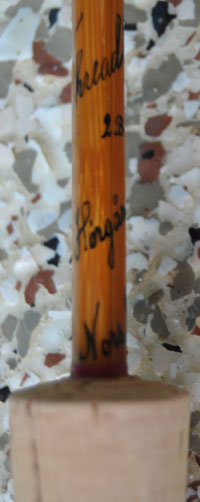
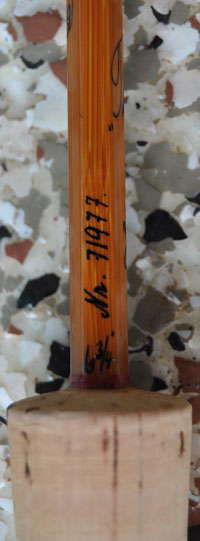
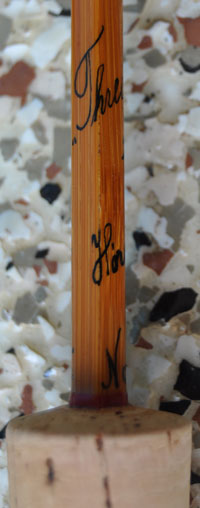
A.H. Golden Fly below
A.H. Konkurannse D (Tournament model) below
Oyvind Bruland has again recently been in contact with me and is offering further help to bring to the fore, more information about ABU/Asbjorn Horgard rods.
Here
Oyvind had previously shared images of the missing A.H. Threadline
spinning rod that I am missing. Hopefully I will be able to buy
rods such as these one day.
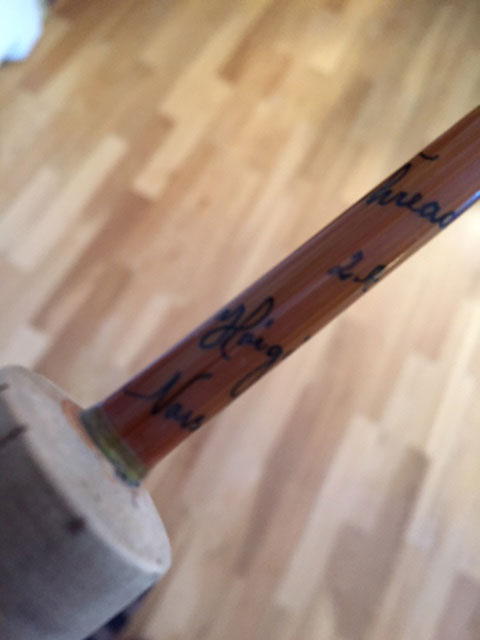
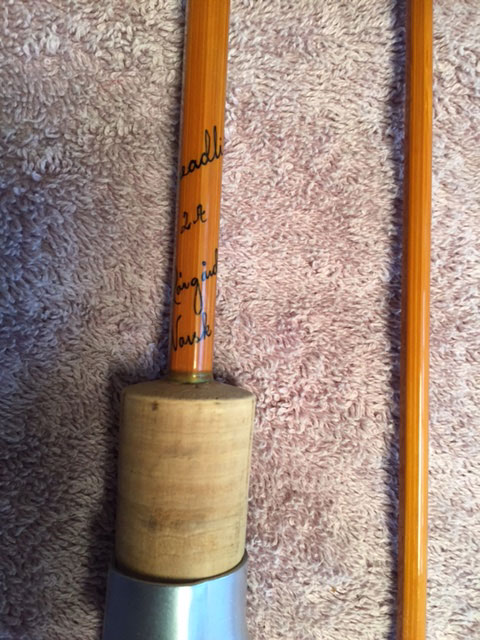
as well
as images of the missing A.H.Sjoa baitcasting rod from Dag
(first 2) and Oyvind (second 2)
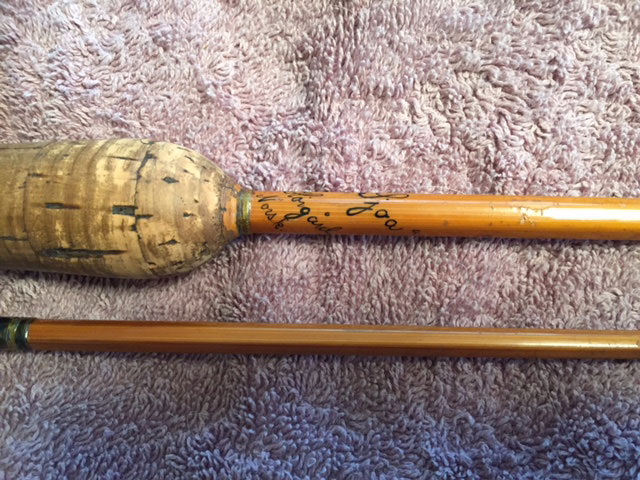
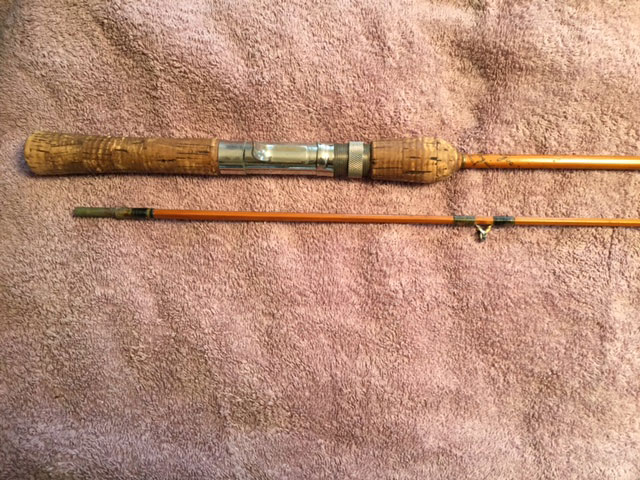
My friend Ove in Norway is organising for me to get a A.H. Sjoa baitcasting rod, then just A.H.Norsk to locate.
1951 Napp och Nytt
The
beautiful light flyrod A.H. Lagen with me and is shown below by
Oyvind. A user of vintage equipment, he assures me this rod
"is
the very nice sea-trout single-hand fly rod which came in three
sections and with two tops"
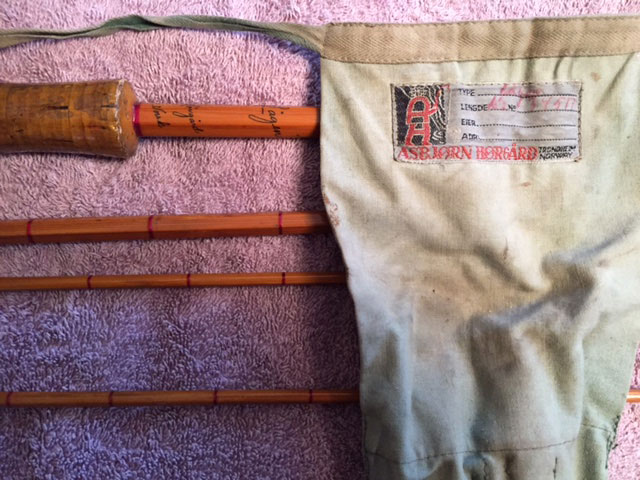
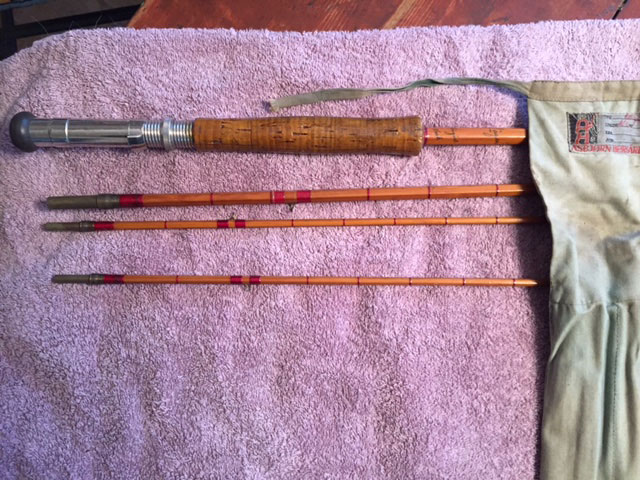
My Norwegian friend Jon Steinsnes and Dr Wolfram Schott are also helpful contributers and are on the job keeping their eyes open for one of these Horgard split cane Threadline spinning rods and/or baitcaster (Norske or Sjoa) rods for me.
Also Hans van der Pauw from the Netherlands has been a great help in gather information on the Horgard rods supplied to ABU.
Enjoy this summarizing Asbjørn Hørgård information written by Wolfram Schott
The Horgard story is extraordinary and well worth the read to see a story of pride, passion, persistence unfold to the benefit of all.
Wolfram has also supplied some wonderful images of the Horgard manufacturing equipment
Alas
there
is
no such thing as a Hörgaard Museum, not in Trondheim (where the
factory was), nor anywhere else in Norway. The items are exhibited
in the Norsk Skogsmuseum (Norwegian Forestry
Museum) in Elverum/Norway, some 400 miles south of Trondheim,
together with MANY hunting, fishing, lumbering, wood-processing and
other related items.
The Horgard rods commissioned by ABU are shown here in better detail than in their 50's catalog pages above.
Great translation from the Norwegian, allowing us English only speaking fans an insight into the background and process involved.
Many thanks to the shy and anonomous translater
In this
first
article,
I will
take
for
me
fly fishing
rods
for
trout
made
from
splitcane
It is
a
known fact
that
The rods
for
trout fishing
with
fly
gear,
were
produced
a few
places
in the country.
Making
cane
rods requires
special
knowledge
and
special
machine equipment,
which
was not
easily
obtainable.
Some
handful of
useful
and
ardent
amateur
team sticks
of wood and
delivered
to a
small
circle.
In
By
splitting
up
The adhesive
was a mixture
of
horn glue
and varnishes.
He noticed
that
the quality
of the
glue
and
paint
were not good,
and
worked his way
to
The rods
achieved a
good
reputation.
They
were
tested
by
city experts
in
fly fishing,
Director Reidar
Brekke
in
Trondheim Insurance
company.
He
was the
most
famous and
important angler
in the city.
He
started
throwing
competitions
in
The statements
from
Brekke
weighed
heavily
and
increased
demand
for Hørgårds
rods.
But
to
sell
them
in
In1944,
Hørgård
went to prison
cause
he
had
been
active
some time
in
an
underground
group in
After the war, there was steady increase in production volume and more than 130,000 fly rods are totally manufactured in Asbjørn Hørgårds name. Until about 1970, the cane rods were dominating the market, when in terms of quality rods for fly fishing. After this the company started fiberglass, carbon and Boro rods of high quality. At this time there was no industrial mass production of cane rods at Hørgård.
The rods were made of a combination of craftsmanship and use of special equipment and appliances. A brief description of the manufacturing method follows here:
Bamboo
was imported
from
These must be stored in longer time before they can be used.
They must
be
really
dry.
The production
begins
with
selecting
and adapt
two
and
two
sticks
in order
to
eliminate weakness
in the
joints
of
the bamboo.
The fibres
in
bamboo
runner
from
extension
to
extension, and these
joints
must
be
dislodged
during
production of the
segments,
so
that the
two parts
never
are located
together.
The logs are
split
by a
knife.
The fibres must not be cut, because fibres can be a bit skewed. A knife will follow the fibres, which are parallel from extension to extension. A saw will cut the fibres and make the rod segment weak.
A
starting part
consists of
six
ribs, three
from
the one
bamboo
and
three
from
the
other.
These
ribs followed
each other
during
the entire
production process.
The
outermost
layer
of the
bamboo
stick,
it is strongest,
the
smooth
shiny
outer surface
must maintained,
the fibres
here
have
the greatest
flexibility.
Therefore
the ribs must be
planed
on the inside,
to keep the
strong
outer fibres.
The outer surface
joints
are smoothened lightly.
Then
the ribs are planed
equally thick throughout
its length.
This
dimension
is slightly
larger
than the
finished
rib
thickness
in
the
thickest end.
When
all the
ribs
are planed
equally
thick
with
a triangular
cross section,
it is ready for
the tapering
plan. Dimension
and
taper determines
the
type of
rod
that
is result.
This
cutting
is done
by machines.
The
self-produced
machines can be
set
exactly
to the
infinite
possibilities
of different
dimensions.
Thus
infinite many
different
types of
rods can be
produced.
After
this operation
is
completed,
six
and
six
ribs are laid
as they
were paired
from
the start.
Gluing
is done
so
that
the
six
ribs which
belong
together
are put into
a
glue container.
From there over
to
a
machine
where
two
threads
with
a
suitable
pressure
are placed
around
the ribs,
both ways
to prevent
twisting
of the
rod.
The bamboo joints are parted, thus
some
of the
weaknesses
from
these
joints is
eliminated.
After
gluing
the
rods are corrected.
When the
rods
are ready, they
must be
controlled
and
put on grips,
reel
mount,
rings
and
hook
ring,
then signed
and
finally
painted.
More to follow I'm sure....
If you have any others listed above, particularly a Horgard Baitcast split cane rod such as the Norsk or Sjoa, or Spinning models viz Figga that are unneeded or doubles in your collection and are available for a reasonable fee, I would be very pleased to hear from you. Particularly any Record rods or Diplomat series, or Safari Spinning or Fly rod and a Pacific Series boat rod.
